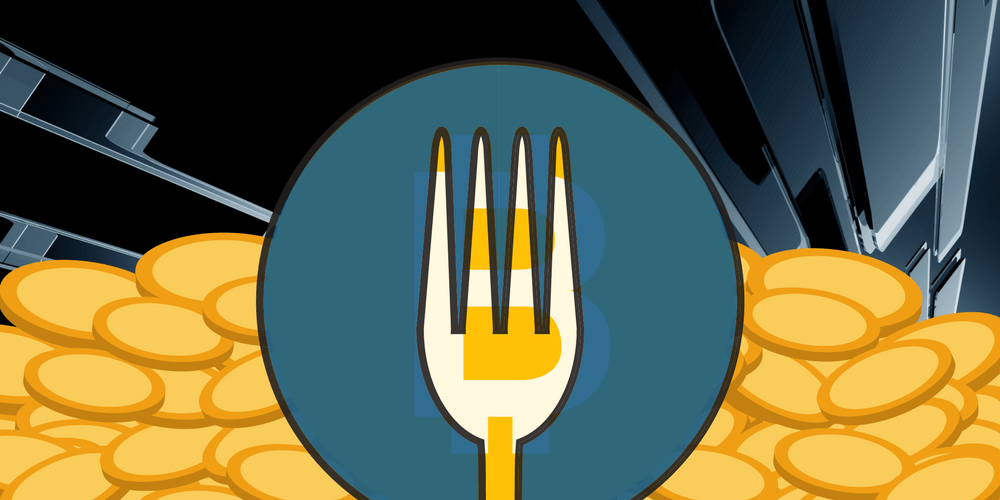
The general way in which rule changes have been made to Bitcoin so far is through the use of soft forks, specifically the process outlined in BIP 9 (at least these days). Soft forks are backward compatible — users are not required to upgrade their software clients in order to stay on the network with the new rules.
In recent years, there have also been multiple attempts at building support for hard forking changes to the Bitcoin network, mainly for the purpose of increasing the block size limit. A hard fork requires that everyone abandons the current Bitcoin consensus rules and moves over to a new network with a different set of rules; a process not too dissimilar from the creation of an altcoin.
So what is the difference between a hard fork and an altcoin?
What is an Altcoin and What is a Hard Fork?
Before getting into the explicit differences between these two terms, both of them should be clearly defined.
Bitcoin.org defines a hard fork as follows:
A permanent divergence in the block chain, commonly occurs when non-upgraded nodes can’t validate blocks created by upgraded nodes that follow newer consensus rules.
It’s a bit more difficult to find anything close to an acceptable definition for altcoins. Investopedia describes them as “alternative cryptocurrencies launched after the success of Bitcoin.”
The Differences Between Hard Forks and Altcoins
Although there are similarities between Bitcoin hard forks and altcoins, there is also at least one major difference that is common, although not a requirement.
A hard fork of Bitcoin will preserve the distribution of bitcoins from the point at which the fork takes place. This means that anyone who had 10 bitcoins on the original network will also have 10 coins on the new network.
While new altcoins can also be created in this manner, there is almost always a new, initial distribution of tokens via a crowdsale, mining, or some other mechanism.
In the past, Bitcoin Unlimited Chief Scientist Peter Rizun, the Augur team, and others have also promoted the concept of launching new altcoins with the initial distribution based on the distribution of bitcoins at a certain block height. This is kind of a way to help bootstrap the network effect of a new token by piggybacking on top of bitcoin’s network effect. Having said that, there is much more to a cryptocurrency’s network effect than its token distribution — perhaps most notably, how users value those tokens.
If everyone moves from the original Bitcoin network to a new, hard-forked network, then it is fair to call the new network “Bitcoin” and dismiss the original network completely. If everyone does not move over to the new network, then the altcoin moniker may be more accurate.
Some would say that the difference between an altcoin and a hard fork is simple because the “true” version of Bitcoin will have the most SHA-256 hashing power behind it. However, an attempted hard forking change to Bitcoin’s proof-of-work algorithm (currently SHA-256) could potentially lead to the existence of two blockchains people are calling Bitcoin for a long period of time. The version of Bitcoin with an alternative proof-of-work could be much more popular than the chain that uses SHA-256.
Where Things Get Weird
The differences between altcoins and hard forks get a bit blurry when a contentious hard fork takes place. If Bitcoin is hard forked and only half of the network moves over, then what has really happened? Is the hard fork an altcoin? Which network deserves to be called Bitcoin? Are either of them really Bitcoin?
A less severe version of this issue occured with Ethereum. When Ethereum hard forked to allow those who lost funds due to buggy code in The DAO’s smart contract to get their ether back, some 85 to 90 percent of the users moved to the new chain. This left roughly 10 to 15 percent of the users on the old chain, now referred to as Ethereum Classic.
So which Ethereum is the real Ethereum and which is an altcoin?
Right now, the general social consensus is that the hard-forked version of Ethereum is Ethereum. Many of the most prominent Ethereum figures, including the platform’s creator, have thrown their support behind the new network, and nearly everyone refers to the new chain as the true version of Ethereum.
Of course, it begs the question: What would happen if Ethereum Classic gained a larger market cap and general level of activity than what is currently referred to as Ethereum? Would everyone then start referring to Ethereum Classic as Ethereum or would everyone keep calling it Ethereum Classic?
One caveat to the above scenario is that the Ethereum Foundation owns the trademark to “Ethereum” in the United States and the European Union. It’s unclear what action the Ethereum Foundation would take (or could take) if everyone started to refer to Ethereum Classic as Ethereum again. Having said that, this issue does not exist in Bitcoin.
This issue may be about to play out in the real world as Grayscale Investments, who is behind the Bitcoin Investment Trust, plan to release an Ethereum Classic investment vehicle and call it the “Ethereum (ETC) Investment Trust.”
Things can get rather confusing as sometimes you can’t be sure if you’re hard-forking the network, creating an altcoin, or both. What looked like a hard fork at first could turn into an altcoin a year later under the right (or perhaps wrong) circumstances — even if it appears that the hard fork has the vast majority of support before it happens.
From the examples provided by the Ethereum community up to this point, it would appear that hard forks that fix an issue at the protocol level that is negatively affecting everyone on the network generally do not lead to the creation of an altcoin. Anything else can get weird.
Thank you to Aaron van Wirdum for providing feedback for this article.

